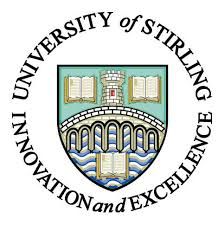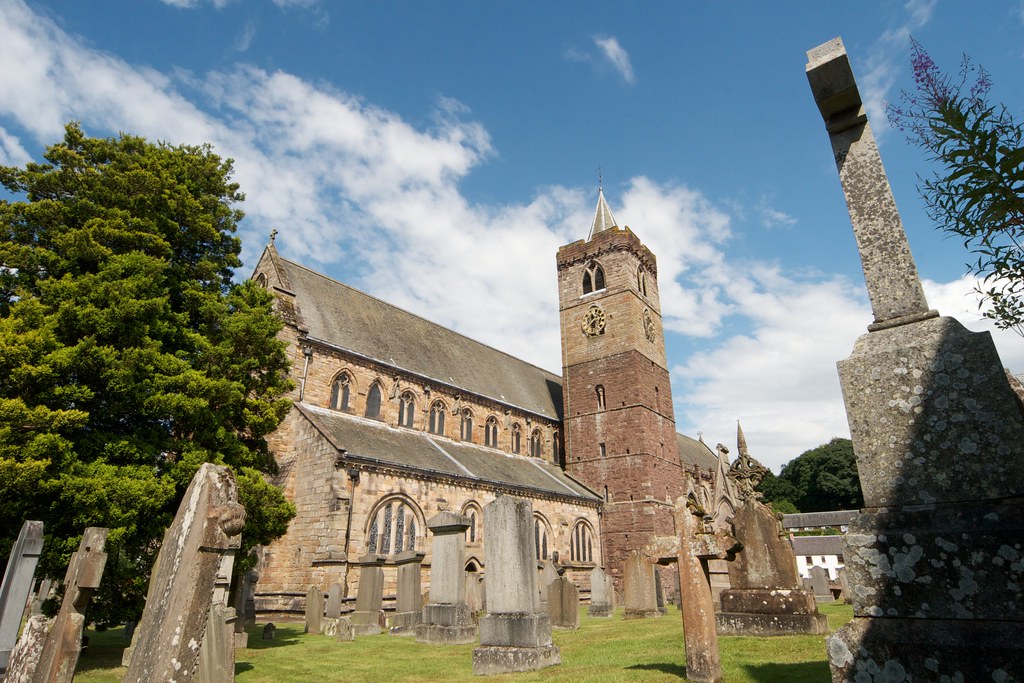Stirling(shire) Churches – Holy Rude, Cambuskenneth, Dunblane, Blair Logie…
Given our location and methodology, Stirling colleagues have also undertaken research in relation to a number of Stirling and Stirlingshire sites of ecclesiastical heritage:
Holy Rude Parish Church, Stirling
This major burgh church was built in two main phases. The nave and lower part of the west tower are largely of the 1450s to 1470s. The choir, and probably the upper part of the tower, belong to works of 1507 to about 1523 which appear never to have been fully completed. Further substantial works were carried out in 1803, 1818, 1869, 1911-14 and 1936-40. About 1150, David I gifted the Holy Rude church and one other Stirling church to Dunfermline Abbey.
As with the Corpus of Scottish Medieval Parish Churches’ surveys of many of great royal burgh churches, our exploration of the history, documentation and architecture of the Holy Rude produced a monograph-length study. This details intense spiritual and socio-economic interaction with the burgh and its people, not least through the foundation of many important side-altars, aisles and chaplainries dedicated to an array of both Christocentric, Apostolic and local/regional cults: the Holy Cross, Holy Blood, Trinity, the Virgin, Anne, John the Baptist, James, Luke, Matthew, Michael, Stephen, Thomas, Peter/Paul, Lawrence, Katherine, Eloi and Ninian.
- Corpus of Scottish Medieval Parish Churches – Holy Rude, Stirling
- Oram R (2017) ‘Holy Blood Devotion in Later in Medieval Scotland’. Journal of Medieval History, 43 (5), pp. 562-578
The Augustinian Abbey of Cambuskenneth, f.1140

This monastic community, founded by David I, grew to become a major socio-economic part of the hinterland of the royal burgh of Stirling, as well as a spiritual focus for the burgh and region.
Work by Richard Oram, Alasdair Ross and others has done much to identify the estates, resources and farming practices of the Abbey, as well as its sometimes challenging interaction with the townspeople, not least tensions over fishing rights and traps upstream on the Forth. But as a major church dedicated to the Virgin and with parochial provision in is nave, the Abbey would also have served as a devotional, processional and even pilgrimage draw at major feasts. Strikingly, it lies east-west directly in-line with the clear-storey windows of James IV’s Great Hall in the Castle, approximately a mile away via the burgh. This was arguably a perfect processional route and distance to the church where this king intended to be buried alongside his father, James III, and his beatific queen, Margaret of Denmark. Might Cambuskenneth thus have evolved to serve as a later-medieval mausoleum for the Stewarts akin to Dunfermline before 1400?
- Oram R (2012) ‘Cambuskenneth Abbey and Its Estates: Lands, Resources and Rights’. Forth Naturalist and Historian, 35, pp. 99-112.
- Corpus of Scottish Medieval Parish Churches – Cambuskenneth Abbey
- Hoffmann RC & Ross A (2019) ‘This belongs to us! Competition between the Royal Burgh of Stirling and the Augustinian Abbey of Cambuskenneth over salmon fishing rights on the River Forth, Scotland’. In: Krasnodębska-D’Aughton M, Bhreathnach E & Smith K (eds.) Monastic Europe: Medieval Communities, Landscapes, and Settlements. Medieval Monastic Studies, 4. Turnhout: Brepols.
Dunblane Cathedral
Mirroring the fate of Dunfermline Abbey in part, the medieval cathedral of Dunblane had provided parochial access to its nave but saw this half left roofless and abandoned after the Reformation. The new protestant congregation made use of the adapted choir until the whole was restored in 1889-93. Little or no trace of the cult of St Blane remains. Although the cathedral never hosted the remains of that sixth century Irish missionary (those lay at Kingarth on Bute), it did hold the bell of Blane’s original monastery. The choir preserves 13th-century stone effigies of a bishop (believed to be Bishop Clement, d.1258) and an Earl and countess of Strathearn.

- Corpus of Scottish Medieval Parish Churches – Dunblane Cathedral
Logie Old Kirk

Lying just outside the University of Stirling’s Airthrey campus are the remains of Logie Old Kirk. Largely 16th-17th century in form, there was nevertheless a parish church here by c.1178 and amongst the memorials left in its churchyard are two 11th-12th century ‘hogsback’ stones.

Dedicated to St Serf (whose body lay enshrined just 15 miles or so east down the pilgrimage way along the north bank of the Forth), Logie was reported as the site of 14th century miracles by chronicler Andrew Wyntoun (based at Lochleven).
As part if the initial development of the Ochils Landscape Partnership (2011-14), our earlier Centre for Environmental History and Stirling colleagues assisted the Logie Old Graveyard community group in conserving and representing the Old Kirk site (with Heritage Lottery Fund support). In 2017 this group was shortlisted for a Historic Environment Scotland Heritage Angel Award for ‘Best Rescue, Recording or Interpretation of a Historic Place’.
- Corpus of Scottish Medieval Parish Churches – Logie


